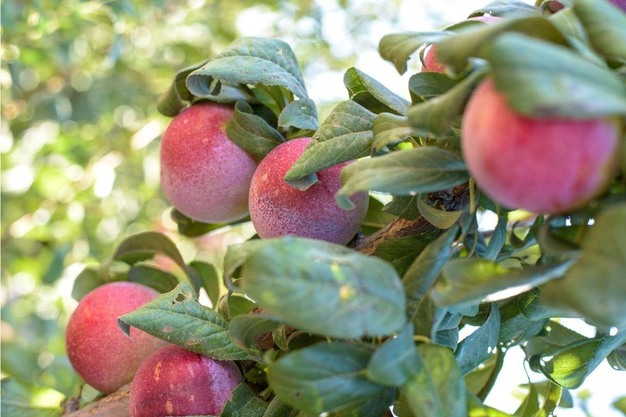A study led by former postdoctoral researcher Paulina Ballesta at the INTA of the University of Chile has developed a predictive model for commercially relevant traits in Japanese plum (Prunus salicina L.), one of Chile's key fruit export species. The research, published in the Horticultural Plant Journal, involved INTA's Plant Biology and Innovation in Agri-Food Systems Laboratory (BVISA–Nutribreeding), the Faculty of Agricultural Sciences of the University of Chile, and other collaborators.
Japanese plum ranked 15th in global fruit production in 2022 with 12.4 million tons, around 70% of which was produced by China, Romania, Serbia, Chile, and Turkey. It is mainly consumed fresh for its sensory attributes, nutritional value, and functional food properties. Like other fruit trees, Japanese plum has a juvenile period of four to five years from planting to fruit production, and most seedlings from controlled crosses do not meet commercial standards.
 © Universidad de Chile
© Universidad de Chile
The study applied genomic selection (GS) to predict at the seedling stage which individuals are most likely to meet desired attributes such as flowering date, fruit weight, sugar content, and acidity. "The main finding is the development of predictive models for commercially relevant traits in Japanese plum, a fruit of major importance for Chilean exports," said Igor Pacheco, head of BVISA–Nutribreeding and corresponding author.
GS uses genetic data and statistical models to estimate the genetic value of traits without waiting for the full production cycle. Pacheco explained that more than 98% of generated individuals are usually not selected, which increases costs for breeding programs. By sequencing DNA from all seedlings and applying predictive models, breeders can focus resources on plants with the highest potential, improving efficiency and adapting varieties to local conditions.
In this study, over one thousand trees were genotyped with 11,000 molecular markers (SNPs) and evaluated over two seasons. The models achieved predictive capacities between 70% and 90%, depending on the trait. Pacheco noted that this allows time and resources to be focused on individuals more likely to have the desired qualities.
The technology enables the creation of varieties adapted to changing climate conditions and with high commercial value without using transgenesis or gene editing. "Moreover, it allows the generation of intellectual property for plant varieties free from genetic modification such as transgenesis or gene editing, which are still questioned by part of the population," Pacheco said.
The research began as part of Dr. Ballesta's ANID postdoctoral project and continued with IDeA I+D and FONDECYT Regular funding led by Pacheco. Collaboration with the Fruit Quality Breeding Laboratory at the Faculty of Agricultural Sciences, led by Professor Rodrigo Infante, aims to extend the application of this expertise to other fruit species and crops.
For more information:
Universidad de Chile
Tel: +562 29782000
Email: [email protected]
www.uchile.cl
